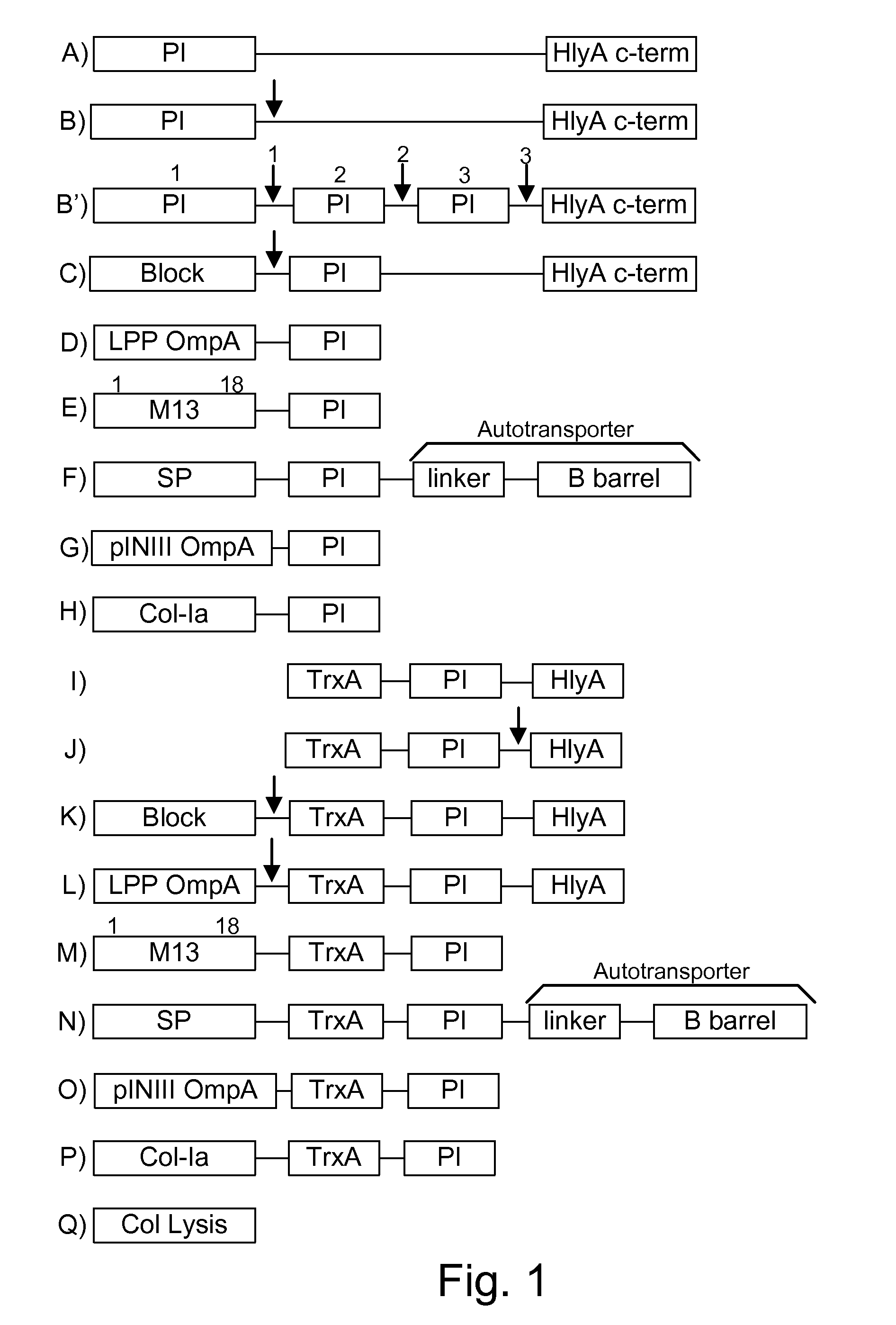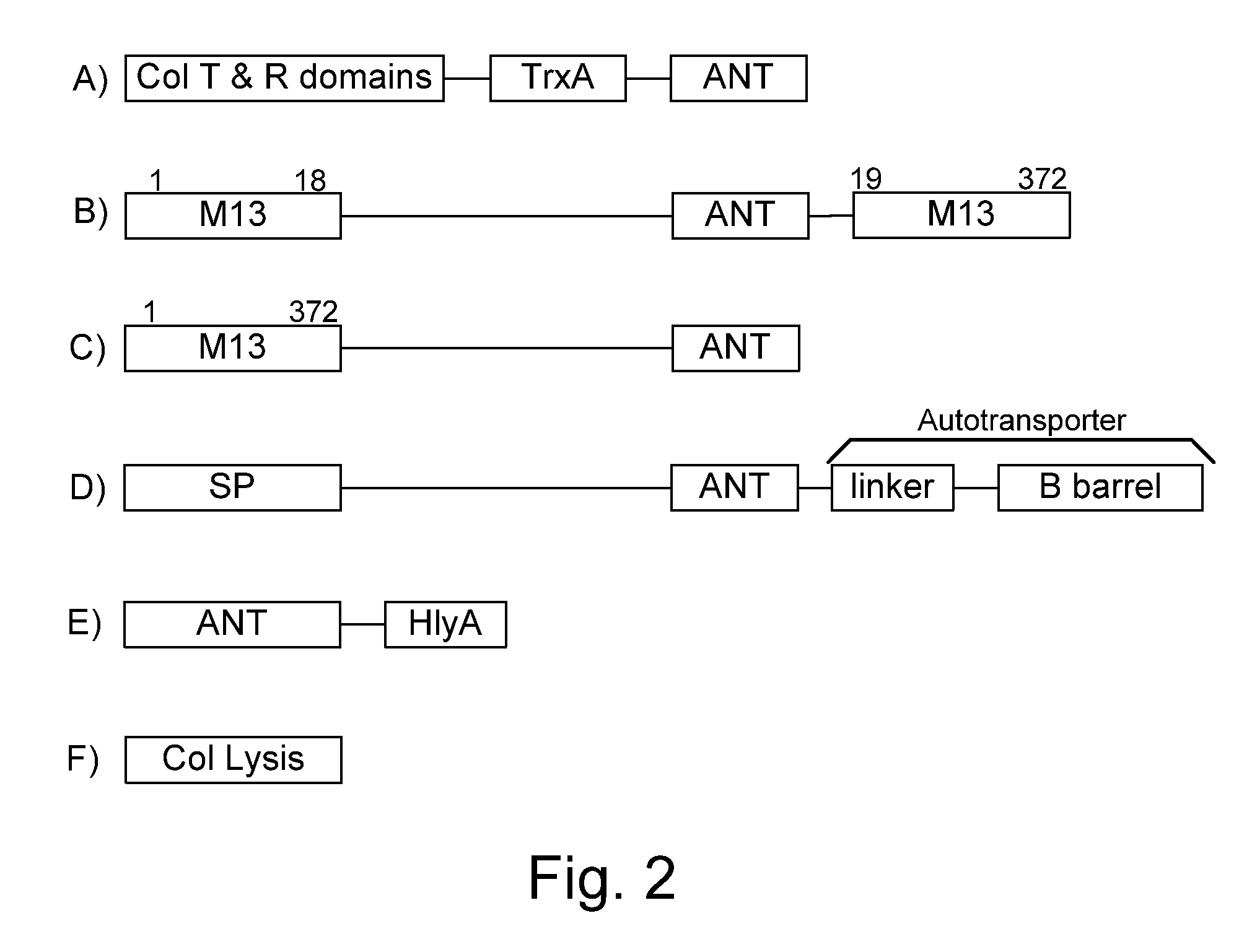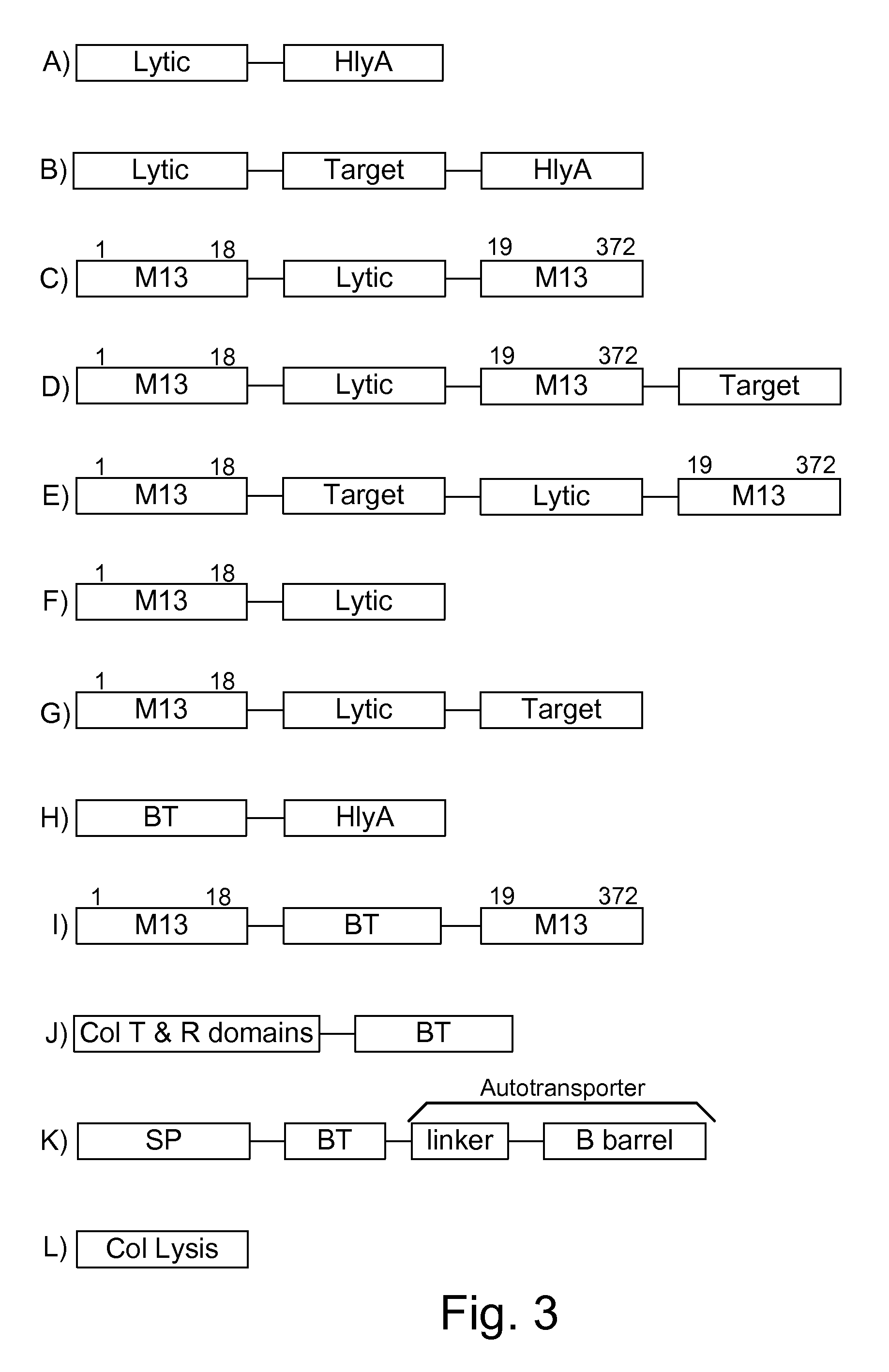Immunization and/or treatment of parasites and infectious agents by live bacteria
a technology of live bacteria and infectious agents, applied in the direction of viruses, peptides, dna/rna fragmentation, etc., can solve the problems of affecting the immune response of the mucosal mucosa, the inability to afford treatment for developing countries, and the inability to use replicating bacteria to stimulate mucosal immune responses, etc., to reduce or eliminate the targeted parasite and infectious disease
- Summary
- Abstract
- Description
- Claims
- Application Information
AI Technical Summary
Benefits of technology
Problems solved by technology
Method used
Image
Examples
Embodiment Construction
[0073]The present invention provides, according to various embodiments, improved live attenuated therapeutic bacterial strains that express one or more therapeutic molecules together with one or more protease inhibitor polypeptides that inhibit local proteases that could deactivate the therapeutic molecules. In particular, one aspect of the invention relates to live attenuated bacterial strains that may include Salmonella vectoring novel chimeric antigens and / or anti-infective toxins to an individual to elicit a therapeutic response against an infectious disease. The types of infectious diseases may generally include prions, viruses, bacteria, protozoans (protists), fungi and helminthes (Mandell, Bennett and Dolin 2010, Principles and Practices of Infectious Diseases, 7th Edition, Elsiever Publishers, 4320 pages). Another aspect of the invention relates to reducing or eliminating the bacteria's ability to undergo conjugation, further limiting incoming and outgoing exchange of geneti...
PUM
| Property | Measurement | Unit |
|---|---|---|
| length | aaaaa | aaaaa |
| buoyant density | aaaaa | aaaaa |
| osmolality | aaaaa | aaaaa |
Abstract
Description
Claims
Application Information
 Login to View More
Login to View More - R&D
- Intellectual Property
- Life Sciences
- Materials
- Tech Scout
- Unparalleled Data Quality
- Higher Quality Content
- 60% Fewer Hallucinations
Browse by: Latest US Patents, China's latest patents, Technical Efficacy Thesaurus, Application Domain, Technology Topic, Popular Technical Reports.
© 2025 PatSnap. All rights reserved.Legal|Privacy policy|Modern Slavery Act Transparency Statement|Sitemap|About US| Contact US: help@patsnap.com



